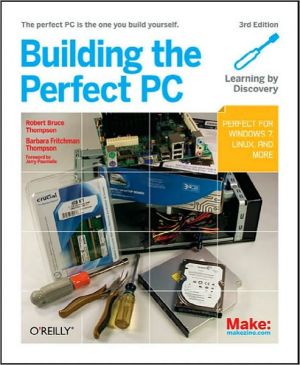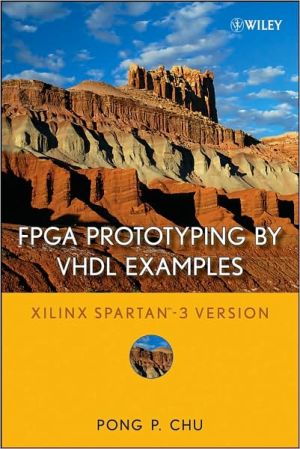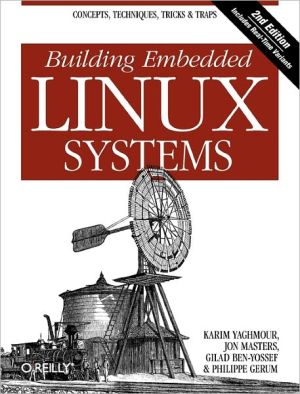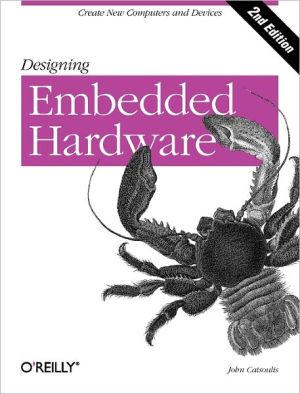Reconfigurable Computing: The Theory and Practice of FPGA-Based Computation
The main characteristic of Reconfigurable Computing is the presence of hardware that can be reconfigured to implement specific functionality more suitable for specially tailored hardware than on a simple uniprocessor. Reconfigurable computing systems join microprocessors and programmable hardware in order to take advantage of the combined strengths of hardware and software and have been used in applications ranging from embedded systems to high performance computing. Many of the fundamental...
Search in google:
The main characteristic of Reconfigurable Computing is the presence of hardware that can be reconfigured to implement specific functionality more suitable for specially tailored hardware than on a simple uniprocessor. Reconfigurable computing systems join microprocessors and programmable hardware in order to take advantage of the combined strengths of hardware and software and have been used in applications ranging from embedded systems to high performance computing. Many of the fundamental theories have been identified and used by the Hardware/Software Co-Design research field. Although the same background ideas are shared in both areas, they have different goals and use different approaches.This book is intended as an introduction to the entire range of issues important to reconfigurable computing, using FPGAs as the context, or “computing vehicles” to implement this powerful technology. It will take a reader with a background in the basics of digital design and software programming and provide them with the knowledge needed to be an effective designer or researcher in this rapidly evolving field.• Treatment of FPGAs as computing vehicles rather than glue-logic or ASIC substitutes• Views of FPGA programming beyond Verilog/VHDL• Broad set of case studies demonstrating how to use FPGAs in novel and efficient ways
Contents Preface Introduction Part One: Hardware Part I INTRO Chapter 1 - General-Purpose FPGA Architecture Chapter 2 - Reconfigurable Computing Devices Chapter 3 - Reconfigurable Computing Systems Chapter 4 - Reconfiguration Management Part Two: Software Part II Intro Chapter 5 - Computer Models and System Architectures André DeHon Chapter 6 - Hardware Description Languages (VHDL)Chapter 7 - Compilation for Reconfigurable Computing Machines Chapter 8 - Streaming Models8.1 MATLAB/SIMULINK8.2 SCORE Chapter 9 SIMD/Vector Chapter 10 - OS/Runtime Systems Chapter 11 - JHDL Chapter 12 -Technology Mapping Chapter 13 - Placement13.1 General-purpose / FPGA13.2 Datapath 13.3 Constructive Chapter 14 - Routing Chapter 15 - Retimin Chapter 16 - Bitstream Generation, JBits Chapter 17 - Fast Mapping Part Three: Application Development PART III INTRO Chapter 18 - Evaluating and Optimizing problems for FPGA implementations Chapter 19- Instance-specific design, Constant Propagation & Partial Evaluation Chapter 20 - Precision Analysis & Floating Point Chapter 21 - Distributed Arithmetic Chapter 22 - CORDIC Chapter 23 - Task allocation: FPGA vs. CPU partitioning Part Four: Case Studies PART IV INTRO Chapter 24 - Image Processing, Variable Precision, Algorithm Alteration: SPIHT Compression Chapter 25 - Run-time reconfiguration: Automatic Target Recognition Chapter 26 - Problem-specific circuitry: SAT Solving Chapter 27 - Multi-FPGA Systems: Logic Emulation Chapter 28- Floating Point Chapter 29 - FDTD Chapter 30 - Genetic Evolution Chapter 31 - Packet Filtering (Networking application)Chapter 32 - Active Pages [Memory centric]Part Five: Theoretical Underpinnings and Future Directions PART V INTRO Chapter 33- Theoretical Underpinnings, Metrics and Analysis Chapter 34 - Defect and Fault Tolerance Chapter 35 - Reconfigurable Computing and Nanotechnology








